Fox Eye Surgery
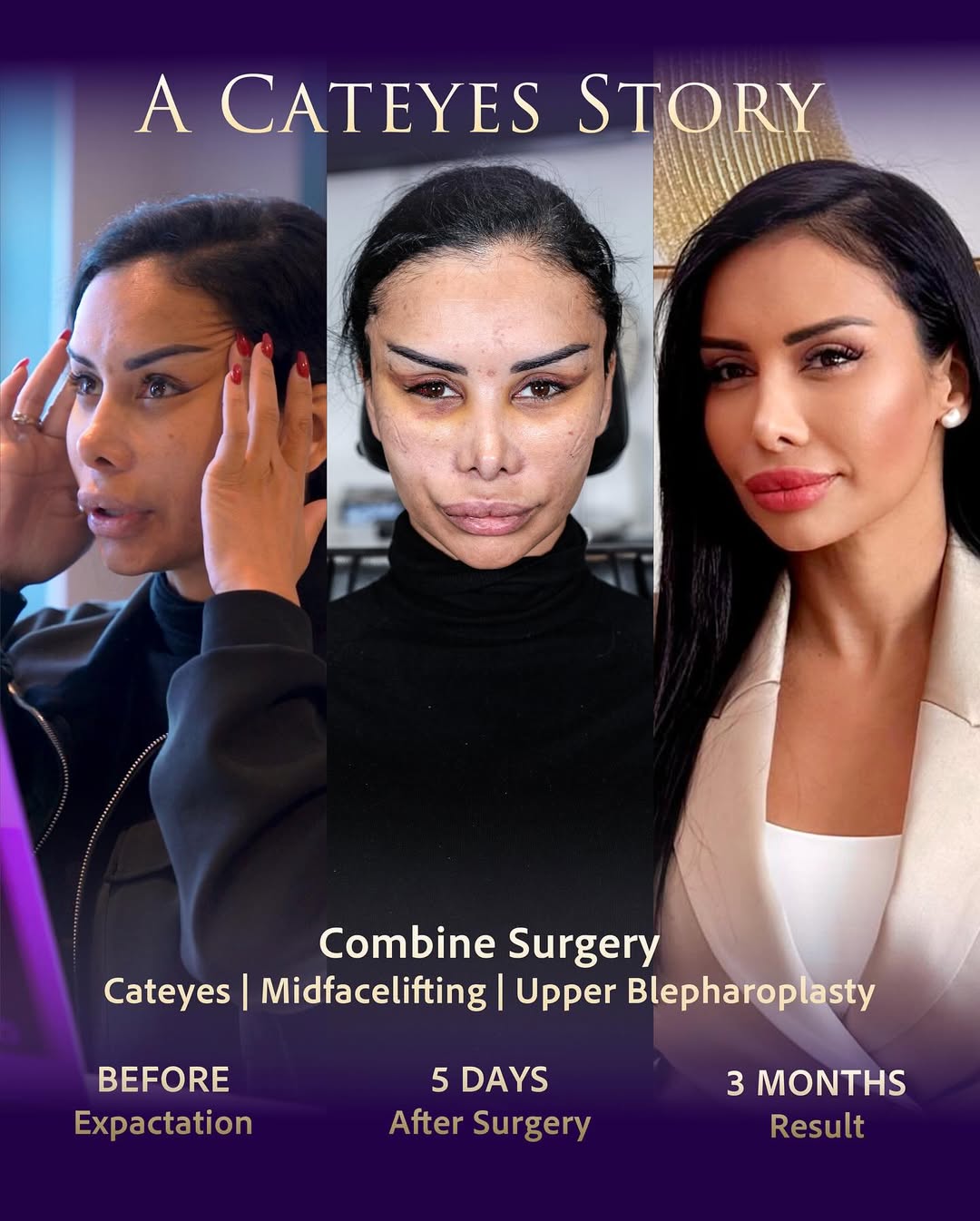
What is Fox Eye Surgery?
Fox eye surgery is a cosmetic procedure that creates a lifted, elongated eye shape—similar to the sharp, angled eyes often seen on models and celebrities. The goal is to achieve an exotic, almond-shaped look by gently pulling the outer corners of the eyes upward and sometimes elevating the eyebrows.
While the “fox eye” trend exploded on social media, the actual surgical methods behind it are grounded in real facial anatomy and customized treatment planning.
What Does “Fox Eye” Actually Mean?
The term “fox eye” refers to the tilted, upward-slanting shape of the outer eyes. It gives a more defined, feminine, and youthful appearance.
This aesthetic is not just about the eyes—it also involves:
- A lifted lateral brow tail
- A tighter and sharper canthal angle (outer eye corner)
- A more elongated eye-to-temple transition
The effect is often described as “cat-like”, “almond-shaped”, or “model-like”.
How Is It Achieved?
There isn’t one universal fox eye surgery. Instead, it’s a customized combination of different procedures depending on the patient’s anatomy, age, and goals.
The most common techniques include:
- Temporal Lift: Lifts the outer brow from the scalp/hairline.
- Canthoplasty: Repositions the outer eye tendon to lift the eye shape.
- Thread Lift: Minimally invasive option using dissolvable threads to pull the skin upward.
In some cases, Botox or fillers may be used as non-surgical alternatives—but they offer only temporary results (3–6 months).
Is Fox Eye Surgery Permanent?
It depends on the method used:
| Method | Duration |
|---|---|
| Thread Lift | 6–12 months |
| Temporal Lift | 5–10 years |
| Canthoplasty | Permanent |
Patients often start with thread lifts to test the look, and if they like it, move on to surgical options for lasting results.
Who Is a Good Candidate?
- Individuals with naturally straight or downturned eyes
- Patients with hooded eyes or drooping lateral brows
- People who want to enhance eye sharpness and brow lift
- Age: Typically 20s to 40s, but older patients may benefit too with slight technique adjustments
Is It Safe?
Yes, when performed by a qualified surgeon. As with any aesthetic surgery, there are risks like swelling, bruising, asymmetry, or overcorrection. But with proper planning and technique, complications are rare and often minor.
The most common side effects:
- Temporary swelling or bruising
- Mild tightness around eyes
- Rare: irritation, dry eye, or uneven pull (correctable)
Fox Eye Surgery vs. Social Media Filters
Let’s be clear:
Instagram filters give an illusion—real fox eye surgery works with your own facial anatomy.
A good surgeon doesn’t “copy-paste” a trend. Instead, they sculpt the result to suit your:
- Eye spacing
- Bone structure
- Skin thickness
- Muscle activity
Final Thoughts
Fox eye surgery can be a game-changer when done for the right reasons, by the right hands. It’s not just about looking trendy—it’s about enhancing your own features with precision and harmony.
Whether you’re after a subtle tweak or a dramatic transformation, this procedure offers a range of options—from threads to full surgery—to match your goals.
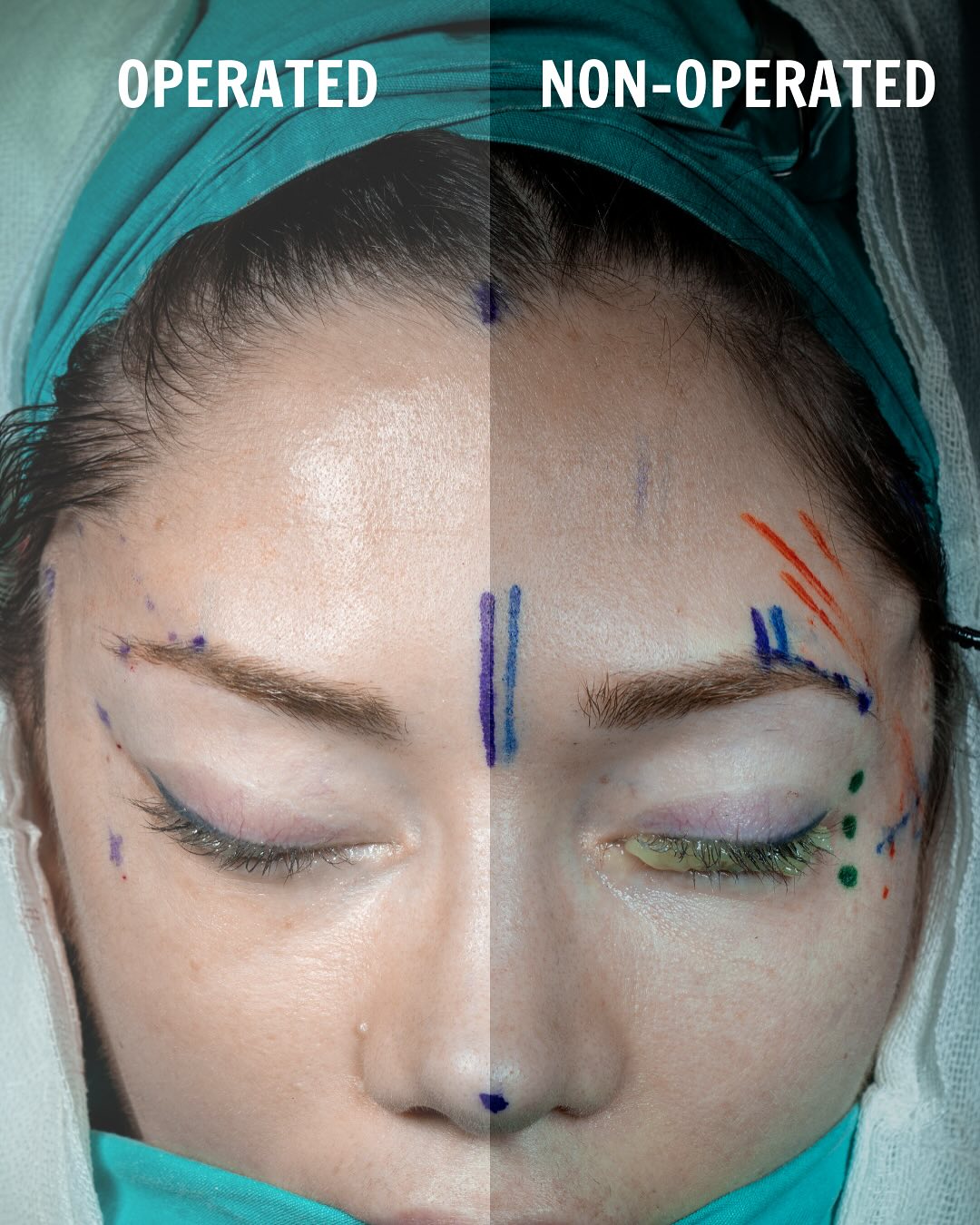
Who is a Good Candidate for Fox Eye Surgery?
Fox eye surgery isn’t just about chasing trends—it’s about matching the right technique to the right face. While the look may seem universal on social media, not everyone is an ideal candidate.
✅ Ideal Candidates
1. People with Naturally Downturned or Neutral Eye Shape
Fox eye surgery can tilt the outer corners upward for a more defined and youthful look.
2. Patients with Mild to Moderate Hooded Eyes
Lateral brow heaviness or skin hooding can be improved with a temporal lift.
3. People Seeking a Sharper, More Defined Look
Creates a model-like, almond-shaped contour.
4. Patients with Eyebrow Asymmetry
Can balance uneven brows with selective lifting techniques.
📊 Age Considerations
| Age Group | Suitability | Notes |
|---|---|---|
| 20s–30s | ✅ Excellent | Firm skin, quick recovery, minimal lift needed |
| 40s–50s | ✅ With adjustments | May require blepharoplasty or midface lift |
| 60+ | ⚠️ Selective only | Reduced elasticity, slower healing |
⚖️ Health Factors to Consider
You might not be suitable if you have:
- Uncontrolled diabetes
- Autoimmune conditions
- Clotting disorders
- Active skin infections
- Heavy smoking history
🚫 Who Should Avoid It?
- Those expecting “filtered” results from real surgery
- Patients with major lid laxity or eyelid trauma history
- Pregnant or breastfeeding individuals
- Anyone not emotionally ready for facial change
📋 Pre-Surgery Checklist
- Am I doing this for myself?
- Have I considered all options?
- Do I understand risks and recovery?
- Have I consulted a certified specialist?
🧠 Final Word
The best candidates are those with realistic expectations, healthy motivation, and a willingness to trust a skilled surgeon. This isn’t about copying others—it’s about bringing out the best version of yourself.
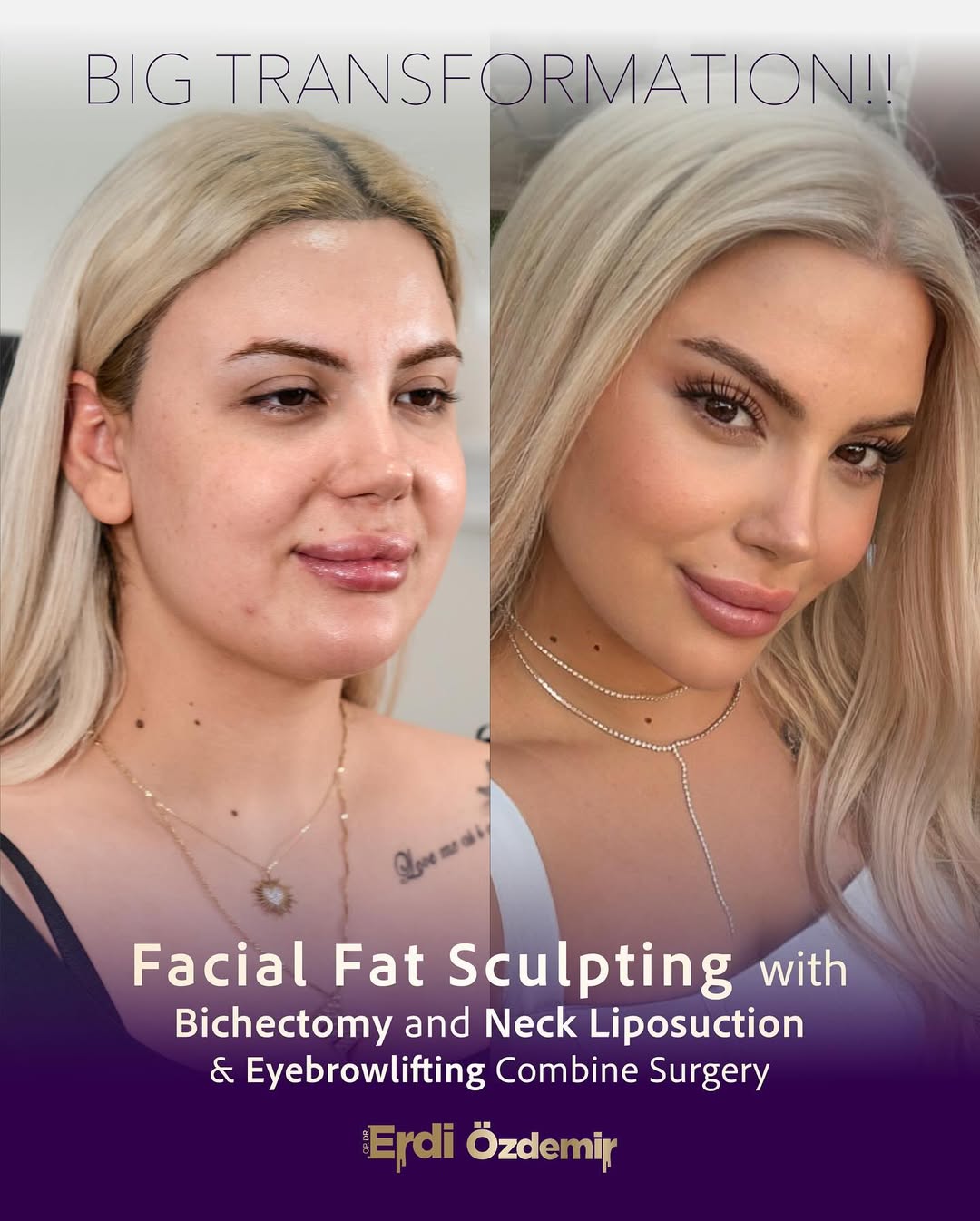
Mewing and Fox Eyes – Is It Really Possible?
Mewing is a facial posture technique that involves placing the tongue firmly against the roof of the mouth to promote upward facial growth. Advocates claim that over time, it can reshape the jawline, cheekbones, and even the eyes. But can it really give you fox eyes?
What Mewing Actually Affects
When done consistently over years—especially during adolescence—mewing may help define the midface and improve jawline projection. However, it does not directly manipulate the canthal angle, brow position, or lateral eye vectors that define fox eyes.
Why Mewing Can’t Replicate Surgery
Fox eye aesthetics rely on lifting the lateral brow and tightening the canthal region—something that requires manipulation of skin, fascia, or tendon structures. Mewing has no mechanism to physically raise these elements, especially in adults with fully developed bone structure.
Where the Confusion Comes From
Many social media comparisons show before/after images claiming dramatic eye changes after mewing. In reality, these differences often stem from lighting, facial fat loss, or subtle eyebrow tension—not bone remodeling. There’s no scientific evidence that mewing alone can produce fox-eye shaped eyes.
What It Can Be Good For
While mewing won’t give you fox eyes, it may support better posture, reduce mouth breathing, and contribute to long-term facial harmony—especially in teens or those with poor resting habits.
Conclusion
Mewing is not a shortcut to fox eye aesthetics. While it may benefit your facial structure and health in subtle ways, achieving true fox eye results—especially the signature lifted look—requires targeted surgical or minimally invasive interventions.
Is Fox Eye Surgery Painful? How is Recovery?
Let’s be honest—no one enjoys pain. The good news? Fox eye surgery is much less painful than most people expect.
🧊 During the Procedure
- Surgical methods: done under local anesthesia with sedation or general anesthesia
- Thread lifts: require only local numbing (like a dental injection)
Most patients say the procedure feels more “weird” than painful.
😬 After the Procedure
You may feel:
- Tightness or pressure
- Mild soreness lasting 1–3 days
Relieved with:
- Ice packs
- Paracetamol or ibuprofen
- Sleeping with head elevated
Sharp or severe pain should be reported to your surgeon immediately.
How is the Recovery Process?
Recovery by Method
| Method | Downtime | Bruising/Swelling | Final Result |
|---|---|---|---|
| Thread Lift | 2–3 days | Minimal | 1–2 weeks |
| Temporal Lift | 5–7 days | Moderate | 3–4 weeks |
| Canthoplasty | 10–14 days | More visible | 4–6 weeks |
First Week Timeline
- Day 1–2: Mild swelling, tightness, bruising
- Day 3–4: Discomfort fades
- Day 5–7: Sutures removed, makeup usually OK
- Day 10+: Most swelling gone, social life resumes
- Week 4–6: Final results appear
Recovery Tips
- Sleep on your back, with head elevated
- No rubbing, massage, or pressure on face
- Use cold compresses in first 48h
- Avoid exercise, alcohol, and smoking during healing
🚨 When to Call Your Doctor
- Severe or increasing pain
- Redness, heat, or pus
- Vision changes or persistent dryness
- One eye healing very differently
✅ Final Thoughts
Fox eye surgery is generally well-tolerated with minimal pain. Downtime is short, and complications are rare. Following post-op instructions ensures the safest, smoothest recovery possible.
A few days of rest can lead to years of confidence.
Fox Eye Surgery Cost – Country Comparison & What’s Included
Fox eye surgery pricing can vary dramatically depending on the country, technique, and surgeon’s experience. Whether you’re considering a quick thread lift or a full surgical approach, here’s what you need to know about how much it costs and what you’re paying for.
🌍 Average Price by Country
| Country | Thread Lift (USD) | Temporal Lift (USD) | Canthoplasty (USD) |
|---|---|---|---|
| USA | $1,500 – $2,500 | $6,000 – $9,000 | $7,000 – $10,000 |
| UK | £1,200 – £2,000 | £4,000 – £6,000 | £5,000 – £7,500 |
| Germany | €1,000 – €1,800 | €3,500 – €5,500 | €4,000 – €6,000 |
| Turkey | $800 – $1,200 | $2,000 – $3,500 | $2,500 – $4,000 |
| South Korea | $1,200 – $1,800 | $3,000 – $5,000 | $3,500 – $6,000 |
🧠 Why the Price Difference?
- Surgeon’s experience: More experienced surgeons = higher cost but safer results
- Clinic location: Big cities and luxury clinics charge more
- Technique: Surgical lifts cost more than threads
- Package inclusion: Some clinics charge extra for anesthesia, aftercare, or meds
🧳 What’s Typically Included in the Price?
- Initial consultation
- Anesthesia (local or general)
- Surgical procedure
- Post-op medications and dressing
- Follow-up visits
- Optional: blood tests, sedation
✈️ What About Medical Tourism?
Countries like Turkey, Thailand, and Mexico offer full-package deals including:
- Airport transfers
- 3–5 nights hotel stay
- Surgery by board-certified surgeon
- English-speaking coordinators
- Aftercare kit and remote follow-up
In Turkey, you can often get a full package under $3,500 with no compromise on safety or surgeon quality.
⚠️ Hidden Costs to Watch For
- Revision surgery is not always covered
- Ask if VAT or hospital fees are extra
- Ensure lead surgeon performs the procedure, not an assistant
🧠 Final Thought
Don’t let price alone guide your decision. Choose based on surgeon skill, clinic safety, and honest expectations. The best deal is getting it done right the first time.
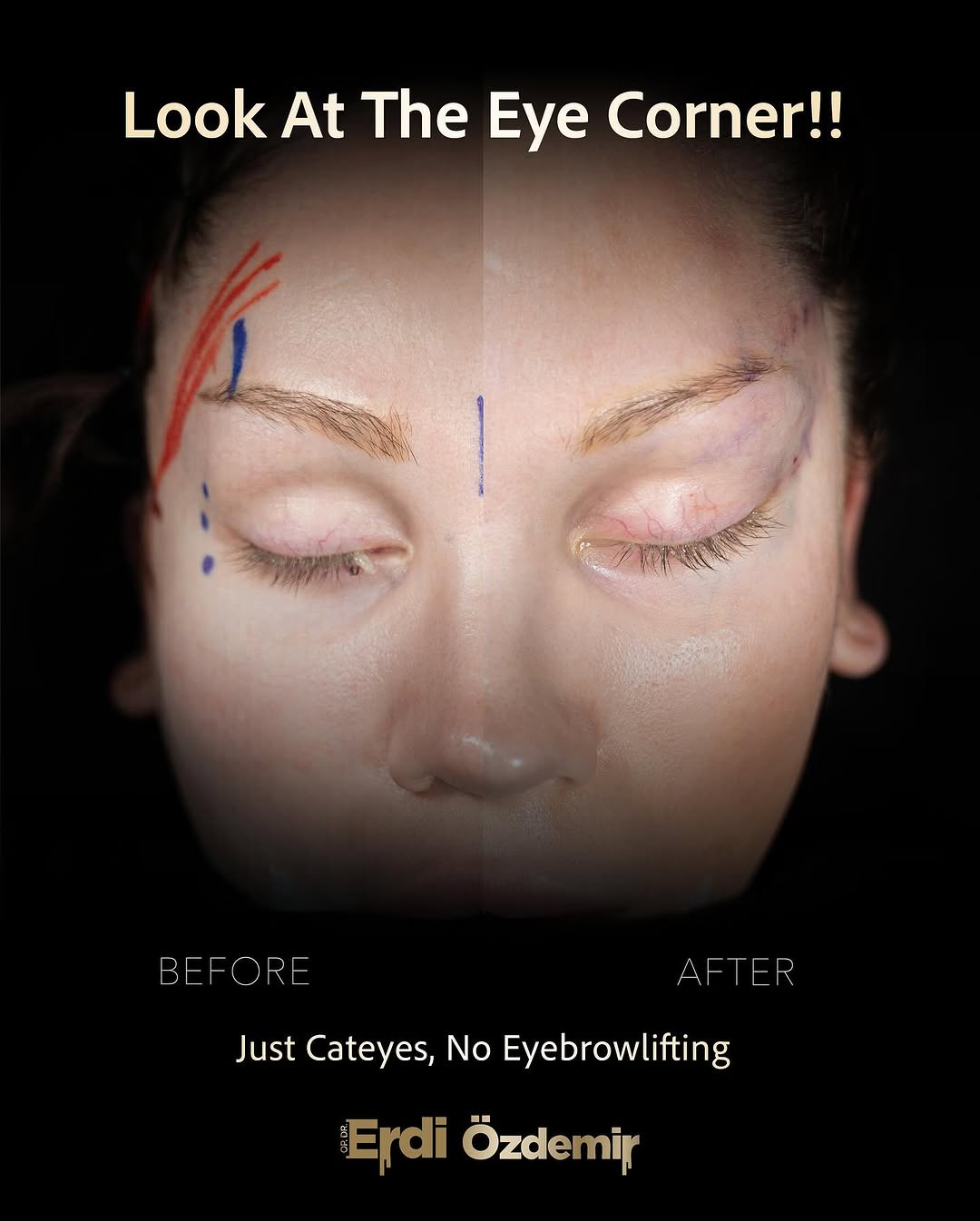
Frequently Asked Questions
1. How long do fox eye results typically last?
It depends on the technique—threads last months, surgery can last years. Discuss expectations clearly with your surgeon.
2. Can I work the next day after a thread lift?
Yes, most patients return to light work within 24–48 hours, but swelling or bruising may still be visible.
3. Will the results look natural?
Yes, when performed by an experienced surgeon and tailored to your anatomy. Overdone results often come from poor technique or unrealistic goals.
4. Can I wear makeup after the procedure?
You should avoid makeup for the first 5–7 days post-op to prevent infection. Always confirm with your doctor.
5. Is the fox eye effect suitable for all face types?
Not always. A proper assessment is needed—very round or deeply set eyes may need adjusted techniques for best outcome.
6. What happens if the threads shift or migrate?
Minor asymmetry can occur. Most threads dissolve over time, but in rare cases they can be adjusted or removed by a professional.
7. Can fox eye surgery fix droopy eyelids?
If the droop is on the lateral side, yes—especially with a temporal lift. For full eyelid ptosis, blepharoplasty may be needed.
8. Are revisions common?
Not common, but possible—especially if patients have asymmetry, poor skin quality, or unrealistic expectations. Choose a surgeon who discusses revisions upfront.
9. Can men have fox eye surgery?
Absolutely. Techniques can be adapted to male facial structure for a sharper, masculine look without feminizing the eyes.
10. How long before I see the final result?
Thread lifts: 1–2 weeks. Surgical: 3–6 weeks. Swelling takes time to settle, so patience is key.
Fox Eye Revision Surgery – Complete Guide
1. What is Fox Eye Revision Surgery?
Fox eye revision surgery refers to any corrective procedure performed after an unsatisfactory or failed fox eye result. It may involve releasing scar tissue, repositioning tissue, or correcting over-pulling and asymmetry. Revision is often more complex than the original due to fibrosis and anatomical changes.
2. Most Common Reasons for Revision
Typical complaints include asymmetry, over-pulled look, visible threads, unnatural brow shape, and fading effects. These often occur after thread lifts done with poor planning or technique.
3. Techniques Used in Revision
- Scar revision or excision
- Tissue release and re-suspension
- Thread removal
- Canthoplasty adjustment
- Re-lifting with improved vector planning
Often a combination of surgical and non-surgical techniques is used.
4. Challenges & Risks
- Scar tissue and fibrosis can reduce mobility
- Facial nerve visibility may be reduced
- Patient expectations may be higher and less realistic
- Secondary surgeries carry more healing risks
5. Is Revision Always Possible?
Not all issues can be reversed. Minor asymmetry or thread complications are easier to fix. Overstretched skin or nerve damage are harder to correct. Early intervention increases success chances.
6. Choosing the Right Surgeon
- Choose board-certified surgeons experienced in revision cases
- Ask to see before-after examples of similar cases
- Ensure you get a written and realistic revision plan
Experience, honesty, and planning matter more than price in revision surgery.
Conclusion
Fox eye revision isn’t about perfection—it’s about restoring balance, confidence, and natural contours. Partnering with the right expert is the key to a successful outcome.
Fox Eye Surgery vs Cat Eye Surgery – What’s the Difference?
They sound similar. They even look similar in before/after photos. But they’re two very different aesthetic goals with distinct surgical approaches.
🔹 What is Fox Eye Surgery?
- Aim: Lift the outer brow and lateral canthus (eye corner) diagonally upward
- Look: Almond-shaped, natural, foxy, slightly exotic
- Techniques: Temporal lift, canthoplasty, threads
- Vector: Superolateral
- Common among: Women seeking a sharp but soft eye contour
🔸 What is Cat Eye Surgery?
- Aim: Dramatically elongate the horizontal axis of the eye
- Look: Sharp, intense, sultry—more “drawn out” than lifted
- Techniques: Often requires lateral canthotomy, canthoplasty, and midface lift
- Vector: Lateral-horizontal
- Common among: Patients seeking a more extreme or exotic transformation
🧠 Key Differences Table
| Feature | Fox Eye | Cat Eye |
|---|---|---|
| Direction of lift | Upward & diagonal | Horizontal & outward |
| Look | Natural, subtle | Intense, exotic |
| Invasiveness | Low to moderate | Moderate to high |
| Main technique | Temporal lift or threads | Canthoplasty & elongation |
| Downtime | 3–10 days | 10–14 days |
✨ Which One Is Right for You?
If you want to:
- Brighten and sharpen your outer eye shape → Fox Eye
- Dramatically change eye length and contour → Cat Eye
The two can also be combined, but should always be tailored to your anatomy.
Written and Medically Reviewed by: Dr. Erdi Özdemir, MD, ENT Surgeon
How to Maintain Fox Eye Results Long-Term
Fox eye results—especially when done surgically—can last years. But your results still depend on how you care for your skin, muscles, and healing tissue after the procedure.
1. Protect Against Sun Damage
UV rays break down collagen and elastin, which support lifted tissue. Use broad-spectrum SPF 30+ daily, even on cloudy days.
2. Don’t Skip Post-Op Follow-ups
Regular check-ins help catch subtle asymmetries early. Your surgeon might recommend Botox or threads for small touch-ups.
3. Avoid Excessive Facial Strain
- Heavy gym lifting
- Sleeping face-down
- Exaggerated facial expressions early post-op
These can put stress on healing tissue, especially in the first 2–3 months.
4. Use Retinol & Collagen-Supportive Skincare
Once healed, medical-grade skincare helps maintain skin firmness around the eyes and temples. Ask your provider before starting.
5. Consider Botox to Prolong Results
Strategically placed Botox can reduce downward muscle pull, especially on the lateral brow and crow’s feet. This offloads stress on the lifted areas.
6. Maintenance Threads (Optional)
In cases where a thread lift was done, you can repeat small threads every 12–18 months to “refresh” the look without full surgery.
7. Healthy Habits = Healthy Lift
- No smoking
- Stable weight
- Hydration and sleep
The healthier your skin and fascia are, the longer the fox eye will hold.
Summary
Long-lasting results aren’t just about surgery—they’re about lifestyle. With smart post-op care and occasional maintenance, your fox eye effect can stay sharp, balanced, and natural for years.
Fox Eye Surgery for Asian Eyes – What to Consider?
Fox eye surgery for Asian patients requires a tailored approach due to unique anatomical and aesthetic considerations. Unlike Western eyelid structures, many Asian eyes feature a lower or absent supratarsal crease, fuller upper lids, and different orbital rim projections.
1. Skin Thickness and Fat Distribution
Asian eyelids often contain thicker skin and more preaponeurotic fat. This can affect the degree of lift and how easily tissue can be mobilized.
2. Lower Set Brows and Eyelid Height
Performing aggressive lateral brow lifts on naturally low-set brows can lead to an unnatural or “surprised” look. A conservative vector is key.
3. Epicanthal Fold Considerations
If a prominent epicanthus is present, lateral lift may appear imbalanced unless the inner eye is proportionally addressed (though medial canthoplasty is rarely indicated for fox eye alone).
4. Cultural and Aesthetic Preferences
Some Asian patients prefer a softer, more natural almond tilt rather than a sharp “snatched” look. Communication about desired results is essential.
5. Technique Adaptation
- Thread lifts may need deeper placement to avoid superficial skin puckering.
- Temporal lifts may involve more lateral dissection due to fat pads.
- Canthoplasty should respect medial canthal angle and preserve ethnic identity.
Summary
There’s no “one-size-fits-all” fox eye surgery—especially across different ethnic backgrounds. In Asian patients, anatomic variation and aesthetic goals must guide the vector, depth, and intensity of the lift.
Can You Combine Fox Eye with Other Surgeries?
Fox eye procedures can be safely and effectively combined with other facial surgeries—when done strategically. Combining surgeries saves recovery time and delivers more harmonized results when performed by an experienced surgeon.
1. Fox Eye + Upper Blepharoplasty
This is a popular combo. While fox eye lifts the tail of the brow and eye corner, blepharoplasty removes excess upper eyelid skin. Together, they open and sharpen the entire upper third of the face.
2. Fox Eye + Rhinoplasty
Perfect for full facial balancing. Common among models or influencers who seek a sharp nasal bridge and lifted eye corners. Must be planned precisely to avoid conflicting healing zones.
3. Fox Eye + Facelift or Midface Lift
Ideal for older patients. While fox eye focuses on the periorbital region, facelifts address sagging in the cheeks and jawline. Together they restore youth without over-tightening any single area.
4. Fox Eye + Brow Lift
Sometimes unnecessary if a good temporal lift is done—but in patients with full brow ptosis (droop), combining both can enhance the overall arch and symmetry.
5. Fox Eye + Fillers or Botox
Especially useful for non-surgical or maintenance approaches. Botox can reduce opposing muscle pull, and fillers help restore volume around temples and cheeks to support the lifted vector.
Things to Keep in Mind
- Plan all procedures in one comprehensive consultation
- Check if general anesthesia is required for combos
- Understand healing times for each area to avoid conflicts
- Don’t “over-stack” too many procedures in one session—subtle harmony is key
Summary
Combining fox eye surgery with other procedures is not only possible—it’s often preferred. When done carefully, it leads to more balanced, natural, and efficient results. Just make sure it’s designed around your face—not a template.
Aging After Fox Eye – What Happens Years Later?
No aesthetic procedure can stop time—but a well-done fox eye lift can age gracefully if done with good technique and realistic tension. Here’s what to expect in the long run:
1. Gradual Softening of the Lift
Over time, gravity and facial movement may slowly reduce the height of the outer brow and eye corner, especially with thread lifts. Surgical lifts tend to maintain shape longer but still soften.
2. Volume Loss Around Temples and Eyes
As we age, fat and collagen reduce around the temples and periorbital region. This can make the lifted area appear more hollow or sharp. Fillers or fat grafting may help maintain balance.
3. Skin Laxity Increases
Even after surgery, the skin will continue to lose elasticity with age. This might eventually lead to mild sagging, requiring touch-ups like mini lifts or radiofrequency-based tightening.
4. Muscle Dynamics Shift
As muscles weaken or become imbalanced over years, brow asymmetry or eye angle changes may become more noticeable—especially if aging is uneven side-to-side.
5. Makeup Behavior May Change
With maturing skin, patients often notice eye makeup behaving differently—creasing, migrating, or failing to highlight the lifted shape. Skincare and makeup adjustments help.
Maintenance Options
- Thread refresh every 12–18 months (for non-surgical lifts)
- Botox to support lifted vectors
- Microneedling or RF for collagen support
- Fillers or fat grafts for volume loss
Conclusion
Fox eye surgery doesn’t freeze time—but with thoughtful maintenance, it can continue to enhance facial aesthetics for many years. Aging is inevitable, but how we age is something we can influence.
Thread Lift Gone Wrong – Real Complications and Fixes
Thread lifts are marketed as quick, non-surgical solutions—but when done improperly, they can lead to complications that require expert correction.
1. Common Problems from Poor Thread Placement
- Asymmetry: One side appears more lifted or pulled
- Visible threads: Especially in thin-skinned patients
- Skin dimpling or puckering: Caused by shallow placement or poor tension
- Thread migration: Threads move from original position
- Infection or granuloma: From contamination or body rejection
2. Why These Complications Happen
- Incorrect depth (too superficial or too deep)
- Poor anchoring vector
- Using wrong thread type for skin quality
- Lack of sterile technique
3. How to Fix a Bad Thread Lift
- Massage or manual release: For mild dimpling
- Thread removal: In cases of exposure, migration, or infection
- Topical steroids or antibiotics: For minor inflammatory reactions
- Surgical correction: If tethering or asymmetry is severe
4. Prevention Tips
- Use blunt cannulas, not sharp needles
- Insert threads in subdermal plane, not superficial dermis
- Choose threads suitable for patient’s skin thickness
- Mark lifting vectors with patient in upright position
5. When to Seek a Revision
If you notice pain, puckering, asymmetry, or thread exposure beyond 1–2 weeks post-op, consult your provider. Waiting too long can lead to fibrosis or chronic irritation.
Summary
Thread lifts can offer natural-looking lifts—but only when performed with precision. Recognizing and addressing complications early makes correction simpler and more effective.
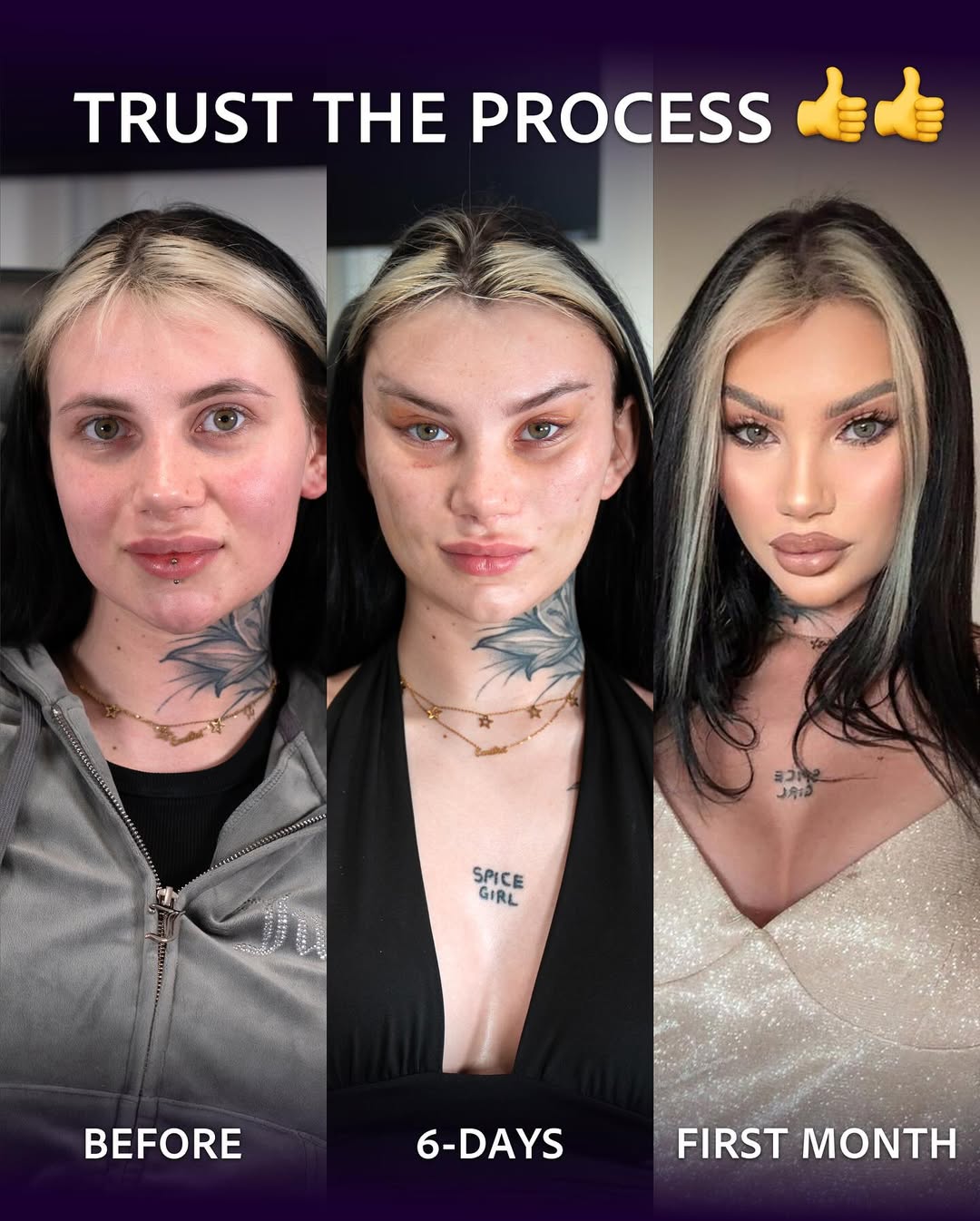
Fox Eye in Men – A Masculine Approach
Fox eye procedures aren’t just for women. More men are seeking subtle eye lifting for a sharper, more confident look—without feminizing their features.
1. Key Differences in Male Anatomy
- Brow Position: Naturally lower in men; over-lifting risks a surprised or unnatural look
- Bone Structure: Men typically have stronger brow ridges and flatter temples, which influence thread anchoring or incision vectors
- Skin Thickness: Male skin is usually thicker, requiring stronger threads or deeper dissection
2. Common Goals in Men
- Reduce tired or “angry” look from hooded outer eyes
- Sharpen lateral canthus without obvious arching of the brow
- Maintain rugged features with a subtle, masculine lift
3. Preferred Techniques
- Temporal lift: Often preferred over threads for lasting and controlled lift
- Canthopexy: Mild support without major tendon repositioning
- Deep-plane threads: When done, placed deeper and at flatter angles
4. Styling Considerations
- Results should avoid exaggerated lateral arch
- Beard, hairline, and eyebrow shape all factor into aesthetic harmony
- Most male patients request “low visibility” recovery plans
Summary
Fox eye surgery for men requires an entirely different planning logic than for women. With conservative vectors, stronger anatomy-adapted techniques, and precise goals, it’s possible to lift and sharpen the eyes without compromising masculinity.
Fox Eye Trends by Year – How the Aesthetic Changed
Fox eye aesthetics have evolved significantly over the years. From extreme ‘snatched’ looks inspired by filters to more natural, lifted contours, the perception of the “ideal eye” continues to shift with fashion, media, and cultural values.
2018–2019: The Instagram Filter Era
Dominated by exaggerated, high-arched brows and dramatically tilted outer canthi. Threads were aggressively placed for maximum effect. Often led to over-pulling and unnatural expressions.
2020–2021: Celebrity Influence
Influencers and celebrities like Bella Hadid brought more attention to fox eye aesthetics, shifting the trend toward a model-like, almond-shaped eye—less extreme, but still lifted and refined.
2022–2023: Naturalization & Backlash
More patients began seeking revision for overdone thread lifts. The demand shifted to subtler results, with emphasis on anatomical harmony. The “super snatched” look lost popularity.
2024–2025: Balanced, Anatomically-Informed Designs
Today’s trend favors a soft lateral lift, preserving individuality. Surgeons prioritize facial proportions, ethnic identity, and longevity of results over trendy exaggerations.
Where Is It Headed?
The future of fox eye design lies in personalization—not replication. Instead of copying a celebrity look, patients are embracing techniques that complement their natural anatomy and aging trajectory.
Summary
Fox eye isn’t one single look—it’s an evolving aesthetic shaped by time, culture, and individuality. The best outcomes come not from chasing trends, but from creating balance and harmony for each unique face.
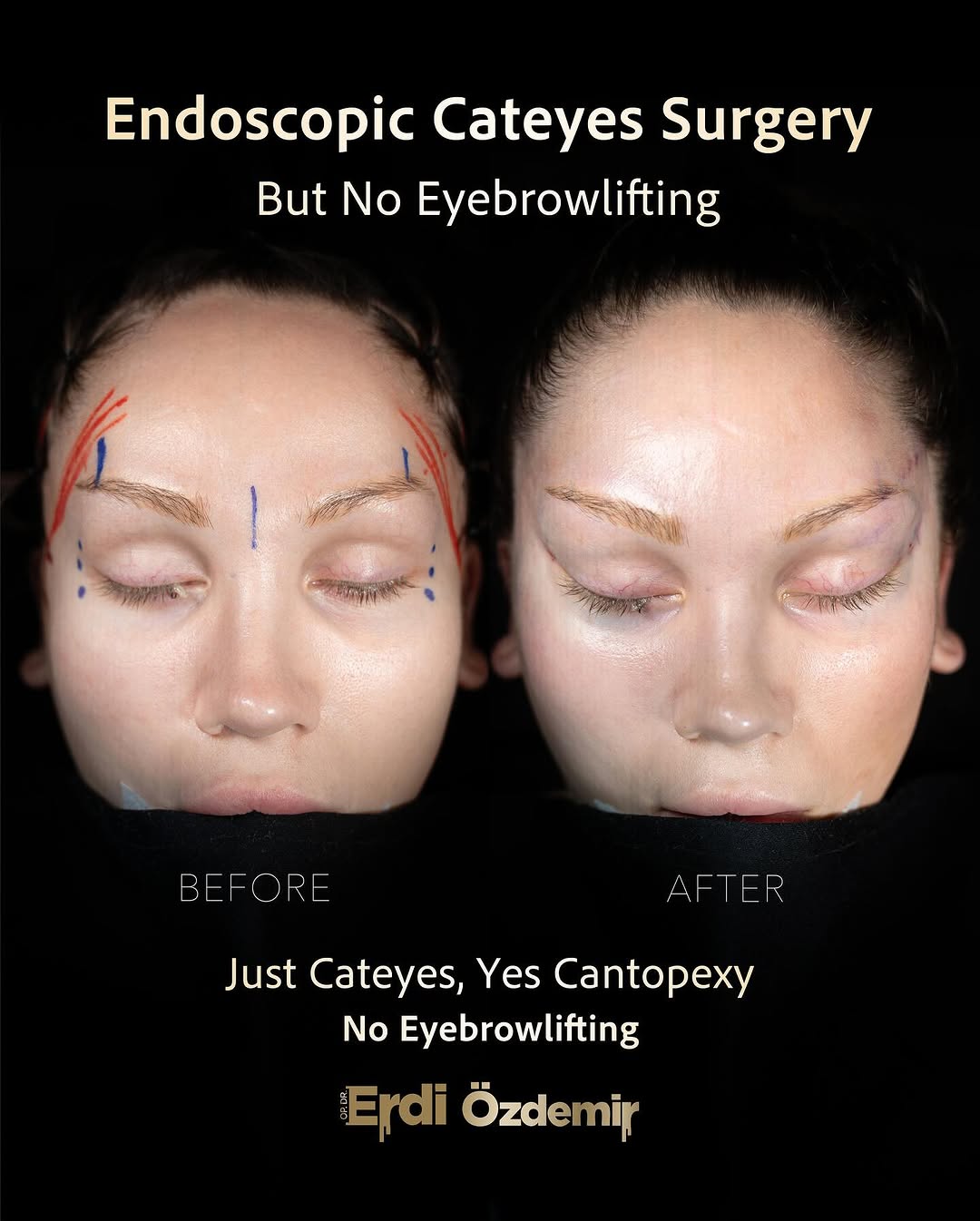
Fox Eye Without Surgery – What’s Actually Possible?
Not everyone is ready for surgery—and that’s okay. There are several non-surgical methods that can mimic the fox eye look temporarily or subtly. But how effective are they really?
1. Thread Lift (Minimally Invasive)
Polydioxanone (PDO) or PLLA threads are inserted under the skin to lift the outer eye. Effects last 6–12 months. Best for mild lift in younger patients. Risk of asymmetry or thread migration exists.
2. Botox (Chemical Lift)
Strategically placed botulinum toxin around the tail of the brow can provide a mild ‘chemical lift’. Great for first-timers or those wanting subtle results. Wears off in 3–4 months.
3. Tape or Makeup Hacks (Temporary Only)
Some use invisible eye tapes, brow gels, or contouring to ‘fake’ the fox eye look for events or photoshoots. Harmless, but not a long-term solution.
4. Ultherapy or Radiofrequency (Skin Tightening)
Energy-based devices can tighten lateral brow skin, creating a small lift. Best for patients with early skin laxity. Results build gradually and may take months.
5. Filler Lift (Structural Support)
Injecting filler into the temples or lateral brow bone can create a lifted appearance by adding volume and contour. Works best when paired with Botox.
Realistic Expectations
Non-surgical options offer temporary, subtle improvements—not dramatic changes. They work best as maintenance, a trial run, or a bridge before surgical commitment.
Summary
You can mimic a fox eye effect without surgery—but with limits. If you’re seeking major lift or long-lasting results, surgery remains the gold standard. That said, non-invasive tools are a great starting point or add-on for the right patient.
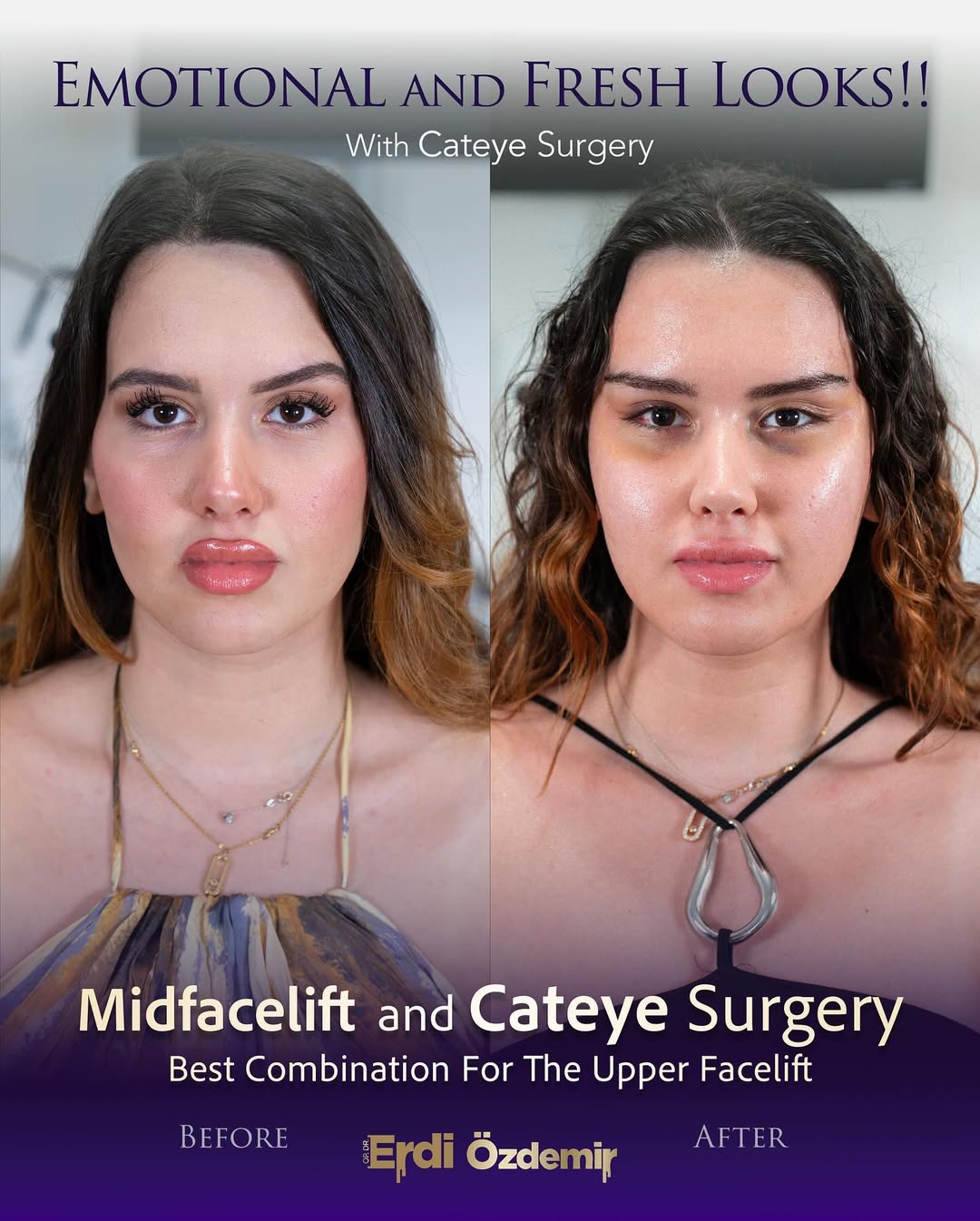
Fox Eye for Different Eye Shapes – Detailed Surgical Considerations
Hooded Eyes
Hooded eyes are characterized by a fold of excess skin that partially or fully covers the upper eyelid. For these patients, fox eye surgery can be transformative—it opens the outer third of the eyelid and lightens the “heavy” look. However, care must be taken not to rely solely on lateral pulling. If the hooding is caused by true skin excess or fat prolapse, combining a temporal lift with upper blepharoplasty gives a more natural, durable result. Over-lifting without addressing the eyelid heaviness can lead to awkward transitions and shadowing.
Deep-Set Eyes
Deep-set eyes sit further back in the skull, often beneath a more pronounced brow bone. With this eye shape, the fox eye lift must be planned carefully to avoid a sunken or harsh look. A moderate lateral lift can add definition to the outer eye contour, but deep dissection may be needed to free the SMAS layer properly. Avoiding extreme vectors is key—if the lift is too vertical, it exaggerates the depth and may create a hollow appearance. Gentle, horizontal vectors work best here, sometimes combined with volume restoration (fat grafting or fillers) to the temples.
Round Eyes
Patients with round eyes often want a more elongated, almond-like appearance. Fox eye surgery can achieve this—but only when canthoplasty is included to subtly change the lateral canthal angle. Lifting alone (thread or temporal) may improve brow shape but won’t elongate the eye itself. Round eyes are also more prone to scleral show (white showing under the iris) if over-pulled. Therefore, reinforcing the canthal tendon and gently rotating the outer corner upward gives the best aesthetic with functional safety.
Monolids / Asian Eyes
Monolids lack a defined supratarsal crease, and the eye tends to have a broader, flatter upper lid. In these patients, fox eye procedures are best when customized with cultural sensitivity. The goal is often to enhance horizontal length and lift, without creating an unnatural crease or overly arched brow. Temporal lifting works well if done with subtle vectors and minimal tension. Excessive lift can distort ethnic harmony or create a “Westernized” look many patients wish to avoid. Surgeon experience with Asian anatomy is essential.
Upturned Eyes
Upturned eyes already have a natural fox-like lift at the outer corners. In these cases, fox eye surgery is used more for refinement than transformation. Over-lifting risks exaggerating the tilt, leading to an “angry” or “cartoonish” appearance. Instead, the focus is on softening the lateral brow or correcting asymmetry. These patients often do better with non-surgical options like Botox or a mini-thread lift, unless they’re experiencing age-related descent of the lateral brow.
Downturned Eyes
Downturned eyes slope downward at the outer corners, which can give a sad or tired expression. Fox eye surgery is especially effective here—it lifts the canthal angle and rebalances the eye contour. However, the correction must be well-anchored. Canthoplasty or canthopexy is almost always required, and thread lifts alone are insufficient. The procedure must also account for age, as tissue laxity can cause results to relapse if not supported structurally. When done correctly, the effect is brightening, youthful, and emotionally uplifting.
Fox Eye Surgery – In-Depth Explanation of Surgical Techniques
The “Fox Eye” aesthetic aims to create an elongated, lifted lateral canthus and brow tail, imitating the sharp, upward eye contour associated with feline or almond-shaped eyes. While social media has popularized this look, achieving a permanent, natural and symmetrical outcome requires surgical precision far beyond temporary thread lifts.
In this article, we’ll explore the three core surgical techniques used to achieve a fox eye look:
- Temporal Lift (Lateral Brow Lift)
- Canthoplasty / Canthopexy
- Thread Lifting (PDO/Cog Threads)
Each technique involves different anatomical structures, levels of invasiveness, and surgical indications. Choosing the correct procedure—or a hybrid approach—is critical to both aesthetic success and functional safety.
1. Temporal Lift (Lateral Brow Lift)
Anatomical Target:
- Superficial temporal fascia (temporoparietal fascia)
- Lateral orbital rim
- Frontalis and orbicularis oculi interplay
Surgical Technique:
Temporal lift is performed via an incision hidden within the temporal hairline, typically 2–3 cm behind the lateral orbital rim. Dissection is done in the subgaleal or subcutaneous plane, depending on desired lift force and direction.
Once the lateral brow complex is dissected free, it is repositioned superolaterally and fixed either:
- Directly to the deep temporal fascia using absorbable sutures
- Or with endotine fixation devices (resorbable implants)
Tension must be balanced to avoid over-elevation or asymmetry. Proper vector alignment ensures a natural arch without “surprised” brow expression.
Notes for Surgeons:
- Consider SMAS mobility and frontal branch of the facial nerve path (~1.5 cm inferior to the zygomatic arch).
- Avoid aggressive dissection in patients with thin temporal skin.
- Can be combined with upper blepharoplasty or thread lift for hybrid effect.
2. Canthoplasty (Lateral Canthal Suspension)
Anatomical Focus:
- Lateral canthal tendon
- Whitnall’s tubercle
- Tarsal plates
- Periosteum of the lateral orbital rim
Surgical Technique:
Accessed through a small lateral canthotomy, this technique detaches and repositions the lateral canthal tendon slightly higher and tighter, giving a sharp upward slant to the palpebral fissure.
The tendon is reattached with non-absorbable sutures to a new anchoring point on the periosteum of the lateral orbital rim (often 2–3 mm above the original attachment).
Notes for Surgeons:
- Must avoid lower lid ectropion by ensuring proper lid-globe apposition.
- Evaluate preoperative lower lid laxity with snap-back and distraction tests.
- In high-risk patients, combine with lower lid suspension or midface lift.
3. Thread Lift (Minimally Invasive)
Anatomical Target:
- Subdermal layer over the zygomatic arch and lateral brow
Surgical Technique:
Small puncture points are made along the temporal hairline and lateral orbital area. Using a cannula, threads (typically PDO, PLA, or PLCL) are inserted under the skin following a diagonal vector. Threads hook into tissue and allow tensioning that lifts the brow tail and outer canthus.
Limitations:
- Does not affect deeper structures (tendons, fascia)
- Temporary, not ideal for long-term fox eye appearance
- May lead to puckering, thread visibility, or asymmetry
Comparison Table
| Criteria | Temporal Lift | Canthoplasty | Thread Lift |
|---|---|---|---|
| Invasiveness | Moderate | Moderate-High | Low |
| Longevity | 5–10 years | Permanent | 6–12 months |
| Downtime | 7–10 days | 10–14 days | 2–3 days |
| Risk of Complications | Low if skilled | Medium | Medium-High |
| Ideal For | Brow + Eye lift | Eye corner shaping | Mild non-surgical |
Clinical Takeaway
Choosing between these techniques—or combining them—depends on:
- Patient age
- Degree of ptosis or brow descent
- Desired longevity
- Tolerance for downtime and invasiveness
For example:
A 28-year-old with no lid laxity might achieve great results with temporal lift + threads.
A 40+ patient with lateral hooding and orbital aging likely needs canthoplasty + temporal lift.
Conclusion
Fox eye surgery is not a one-size-fits-all procedure. While social media glamorizes it, true success lies in anatomical understanding, patient selection, and precise surgical execution.
When performed correctly, these procedures can dramatically enhance lateral eye aesthetics without compromising ocular function or facial harmony.
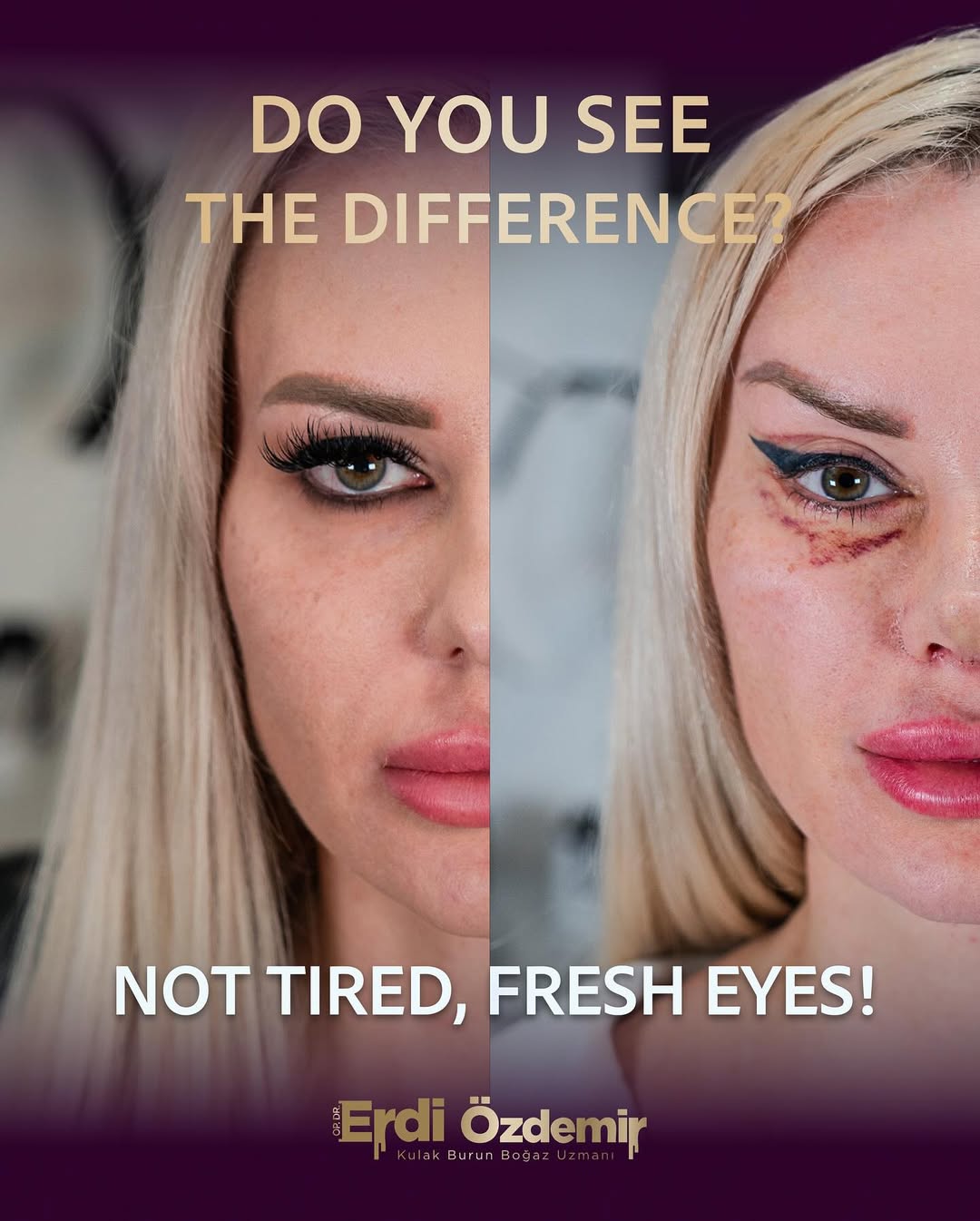
Anatomical Foundations of Fox Eye Surgery: Key Structures and Surgical Considerations
Achieving a successful and natural-looking fox eye aesthetic requires precise manipulation of deep facial anatomy. This section focuses on the key anatomical structures that must be understood and respected by any surgeon attempting temporal lifting or lateral canthal repositioning procedures.
1. Orbicularis Oculi Muscle
Overview: A circular muscle surrounding the orbital aperture, composed of orbital, preseptal, and pretarsal portions. It plays a key role in blinking and lid closure.
Relevance: Tension or trauma during surgery can distort the orbital portion, risking unnatural contouring or eyelid dysfunction.
Surgical Tip: Preserve the pretarsal portion to maintain function and tear film stability.
2. Lateral Canthal Tendon Complex
Overview: Anchors the tarsal plates to the orbital rim, comprising anterior and posterior limbs.
Relevance: Proper reattachment during canthoplasty ensures eye shape and tension. Misplacement causes rounding, scleral show, or ectropion.
Surgical Tip: Whitnall’s tubercle is ~2 mm inside the orbital rim. Blunt dissection is essential to avoid misplacement.
3. Lateral Orbital Rim and Periosteum
Overview: Provides the bony anchor for lifting techniques. Sutures or implants are secured here.
Relevance: Improper anchoring leads to recurrence or asymmetry.
Surgical Tip: Use PDS sutures with tapered needles. Avoid deep penetration to protect infraorbital contents.
4. Superficial Temporal Fascia
Overview: Fibrous layer under subcutaneous fat, continuous with SMAS and galea. Protects the temporal branch of the facial nerve.
Relevance: Key layer for tensioning in temporal lifts. Dissection should stay superficial to avoid nerve injury.
Surgical Tip: Facial nerve crosses 0.5–1.5 cm above the zygomatic arch. Avoid blind dissection here.
5. Retaining Ligaments of the Lateral Orbit
Overview: Includes orbicularis retaining ligament, zygomatic cutaneous ligament, and lateral orbital thickening.
Relevance: They tether tissue, so release is needed for smooth vector elevation.
Surgical Tip: Use blunt scissors to release carefully. Avoid excessive release that causes hollowing.
6. Temporal Branch of the Facial Nerve
Course: Emerges from the parotid, travels across the zygomatic arch to innervate frontalis and orbicularis oculi.
Risk: Damage causes brow ptosis, facial asymmetry, and movement loss.
Surgical Tip: Avoid cautery in this region. Use blunt dissection above the deep fascia.
Summary Table
| Structure | Importance | Risk If Damaged |
|---|---|---|
| Orbicularis oculi | Eyelid dynamics | Lagophthalmos, tearing |
| Canthal tendon | Eye shape, lid tension | Scleral show, ectropion |
| Temporal fascia | Lift vector, tension | Nerve damage, weak lift |
| Periosteum | Suture anchor point | Loss of fixation |
| Retaining ligaments | Vector mobility | Bunching, inadequate lift |
| Facial nerve (temporal) | Motor innervation | Brow ptosis, asymmetry |
Clinical Takeaway
You can’t “lift what you don’t understand.” True results come from respecting the layers, vectors, and pathways involved. A fox eye lift isn’t skin-deep—it’s anatomy-deep.
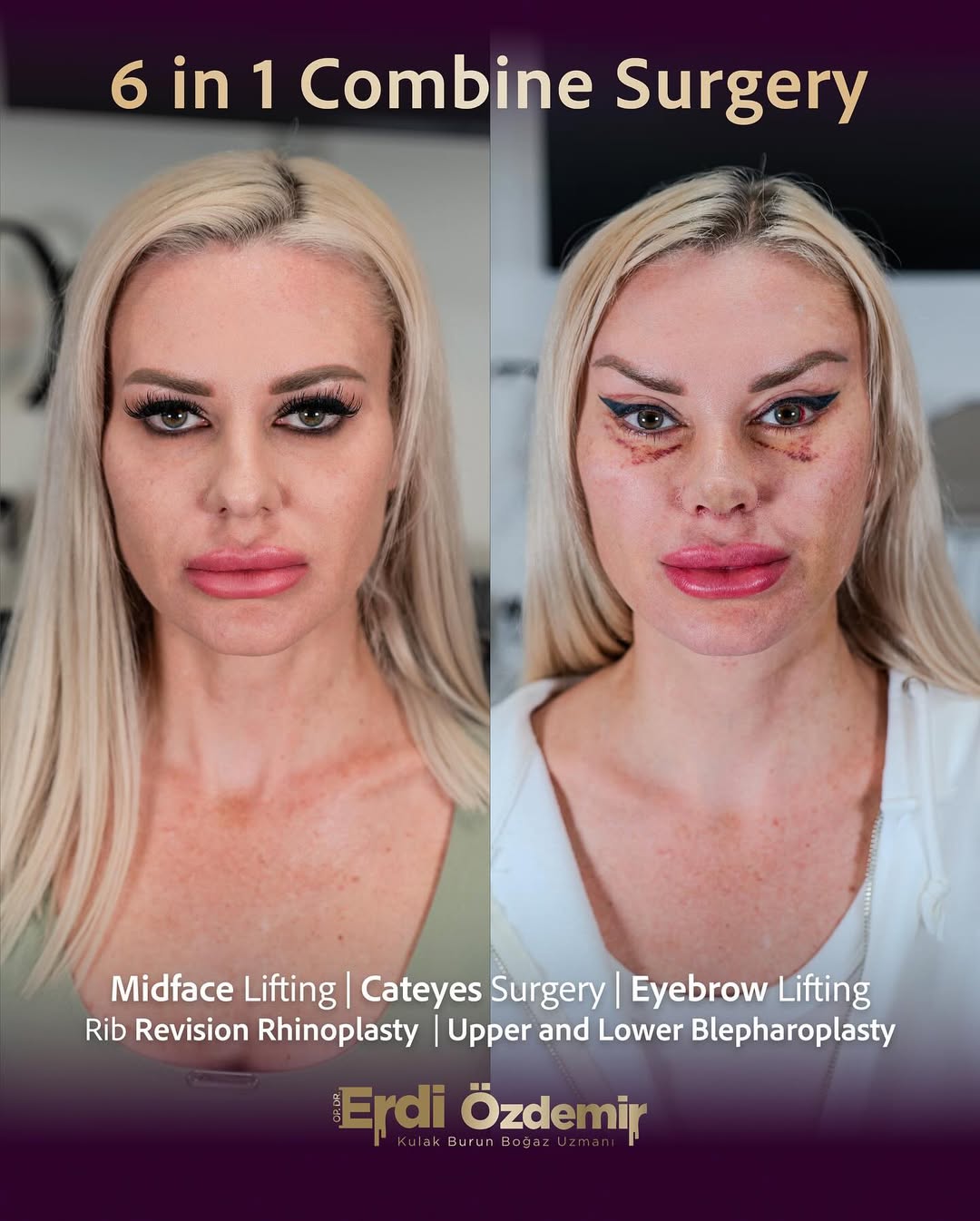
Step-by-Step: How a Real Temporal Lift Surgery Is Performed
1. Preoperative Planning
Patient Evaluation: Assess facial symmetry, skin elasticity, and any previous procedures. Mark vectors from the lateral brow tail toward the temporal scalp, typically 2–3 cm above the lateral orbital rim.
2. Anesthesia
Usually performed under local anesthesia with sedation. General anesthesia may be used for anxious patients. Tumescent solution (lidocaine + epinephrine) is infiltrated for vasoconstriction and hydrodissection.
3. Incision and Entry
A 2.5–3.5 cm incision is made within the hair-bearing scalp using a No. 15 scalpel. Entry is into the deep subgaleal plane to allow smooth dissection and vector pull without skin irregularity.
4. Dissection Phase
Dissection is carried anteriorly toward the lateral orbital rim, staying superficial to the superficial temporal fascia. Avoid deep dissection near the facial nerve, typically 1.5 cm above the zygomatic arch.
5. Vector-Based Elevation
Once the lateral brow complex is mobilized, it is lifted superolaterally. Symmetry is verified intraoperatively by sitting the patient upright for real-time feedback.
6. Fixation
Fixation is done with absorbable sutures (e.g. PDS 3-0) into the deep temporal fascia or with resorbable endotine devices. Vector and tension must preserve natural brow contour without over-pulling.
7. Trimming and Closure
Excess skin is rarely removed unless combined with blepharoplasty. Closure is with 3-0 nylon or 4-0 monocryl in subcuticular fashion to minimize scarring.
8. Postoperative Care
- Compression dressing applied for 24–48 hours
- Ice packs recommended
- Sutures removed on days 7–10
- Return to daily life in 5–7 days
Pro Tips
- Mark in upright position to align vectors
- Check symmetry mid-surgery with mirror or camera
- Avoid dissecting below superficial temporal fascia
- Use blunt tools near nerve zones
Sample Instruments Used
- No. 15 scalpel
- Westcott scissors
- Needle holders
- PDS 3-0 or Monocryl 4-0
- Optional endotine device
Conclusion
The temporal lift is a highly specialized procedure requiring mastery of anatomical planes and tension vectors. When executed properly, it offers elegant, lasting brow elevation with minimal scarring and downtime.
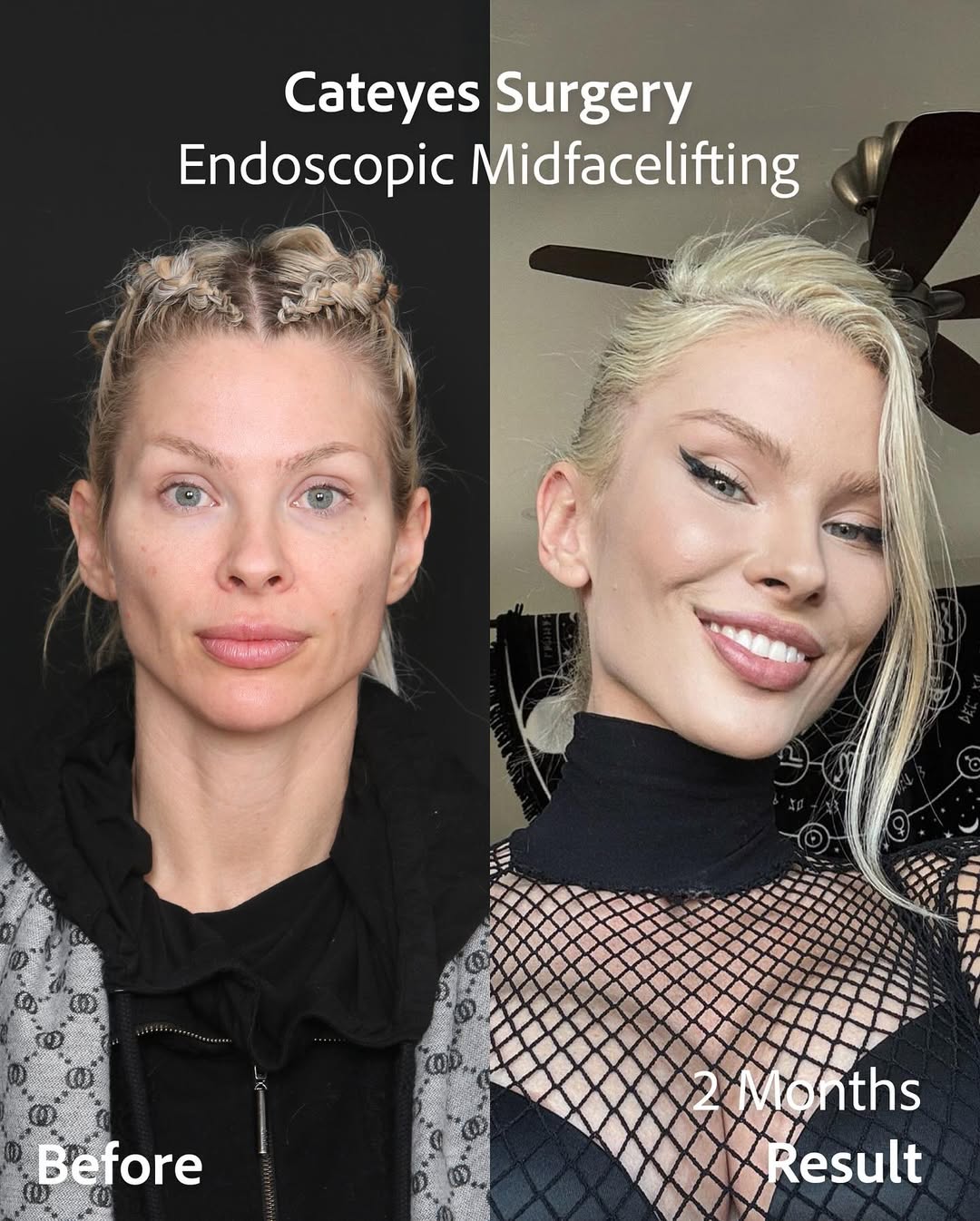
Complications and Risk Management in Fox Eye Surgery
1. Eyelid Malposition (Ectropion, Retraction, Rounding)
What Happens: Lower lid pulls downward or outward, exposing sclera and causing irritation or incomplete lid closure.
Causes: Over-tightening, lid laxity, or poor vector planning during canthoplasty.
Prevention: Preoperative lid tests, proper fixation vectors, and midface support in older patients.
2. Nerve Injury – Temporal Branch of Facial Nerve
What Happens: Inability to raise the brow, facial asymmetry, or brow ptosis.
Causes: Deep dissection or heat damage near the nerve’s path.
Prevention: Dissect above superficial temporal fascia and avoid monopolar cautery in the danger zone.
3. Hematoma & Seroma
What Happens: Fluid or blood accumulation under skin causing pressure, swelling, or bruising.
Causes: Poor hemostasis or lack of compression post-op.
Prevention: Use tumescent anesthesia, compressive bandages, and careful intraoperative bleeding control.
4. Scarring (Hypertrophic or Visible)
What Happens: Thickened or visible incision lines, especially in hairline or puncture sites.
Causes: Wound tension or poor closure technique.
Prevention: Subcuticular sutures, proper incision placement, and post-op scar care.
5. Thread-Related Complications
What Happens: Thread migration, visibility, puckering, or infection.
Causes: Incorrect depth or poor vector anchoring.
Prevention: Insert threads in subdermal plane with blunt cannulas, and educate patient on post-op precautions.
6. Asymmetry
What Happens: Uneven brow height or eye tilt noticeable post-op.
Causes: Poor markings, not accounting for natural facial asymmetry.
Prevention: Mark in upright position and verify symmetry intraoperatively.
7. Infection / Suture Reaction
What Happens: Redness, swelling, pus, or granulomas around suture site.
Causes: Contamination or patient hygiene neglect.
Prevention: Prophylactic antibiotics, sterile technique, and proper wound care education.
High-Risk Patient Profiles
- Age over 40 (laxity, healing delay)
- Smokers (vascular compromise)
- Lower lid laxity (ectropion risk)
- Prior surgeries (scar tissue)
- Autoimmune or diabetic patients (healing risk)
Surgeon Checklist for Risk Mitigation
- Pre-op screening: tone, anatomy, healing capacity
- Use tumescent fluid + epinephrine
- Respect surgical planes and vectors
- Check symmetry intraoperatively
- Educate patients on recovery and aftercare
Clinical Insight
“There are no minor surgeries around the eye—only major consequences.” Prevention is the foundation of success. Avoiding complications starts with respecting anatomy, planning vectors, and tailoring the technique to each patient.
Written and Medically Reviewed by: Prof. Gürkan Kayabaşoğlu, MD, ENT Surgeon


